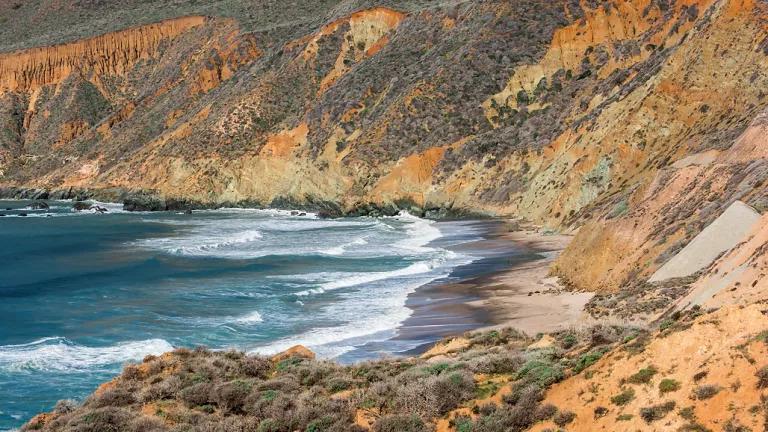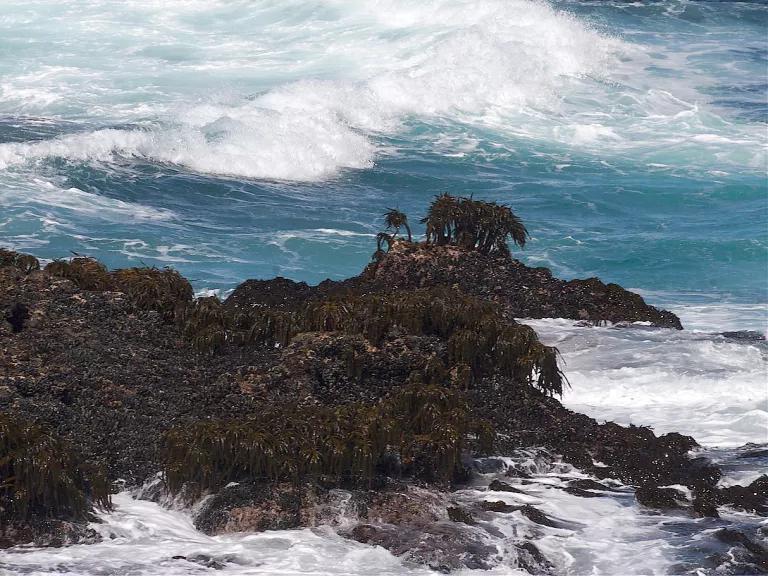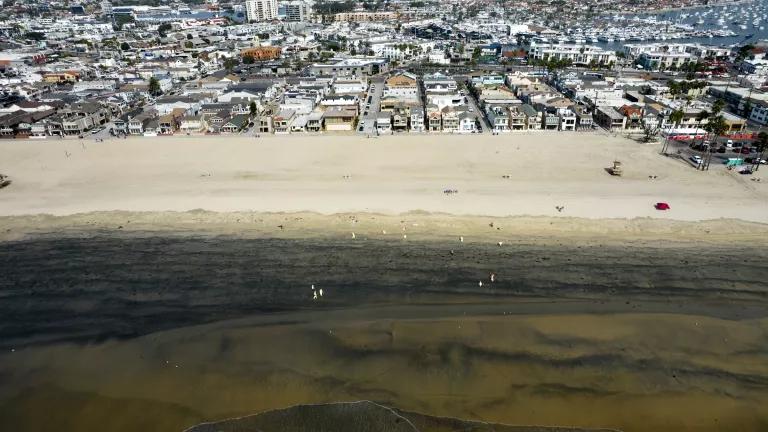Adaptive Management Should Anchor California’s Ocean Conservation Goals
A prime opportunity to bolster California's MPA network is close at hand. State decision makers should move to ambitiously conserve our state's vulnerable seascape.

The beautiful stretch of coastline at Point Sal State Beach near Guadalupe, California
Brian Baer, courtesy of California State Parks 2019
At Año Nuevo State Beach, tide pools teem with marine life. Vibrantly colored nudibranchs and starfish scour this ever-changing habitat while hermit crabs navigate millennia-old depressions in the coastal rock they call home.
The flourishing ecosystem found in these rocky pools is indicative of its location within the Año Nuevo State Marine Reserve (SMR). This strongly protected marine protected area (MPA) is part of California’s extensive MPA network, established by the 1999 Marine Life Protection Act (MLPA) and finalized across the state in 2012.
Overseen by the Fish and Game Commission (FGC) and the California Department of Fish and Wildlife (CDFW), this network of 124 MPAs reaches from Del Norte County down to San Diego County, and it is a crown jewel for ocean conservation on a national and global scale. In addition to its ecological benefits and worldwide recognition, the network also supports ocean-based recreational activities—such as kayaking, surfing, and diving—that enrich California’s $28 billion ocean tourism and recreation economy.
In 2022, our state MPA network celebrated its 10th birthday. As part of that milestone, CDFW released a report called the Decadal Management Review (DMR), based on its initial 10-year review of the state MPA network, in January of last year. Despite the high degree of variation associated with the dynamic marine environment and the uniqueness of each MPA, one simple truth did result from the DMR: MPAs are largely working, though improvements remain necessary.
In the wake of the 2014–2016 marine heat wave, scientists observed that rocky intertidal systems within Central Coast MPAs were not only more stable during the disturbance but recovered faster after it. MPAs also benefit California’s booming ocean economy by promoting fish reproduction, enhancing population connectivity, and facilitating the spillover of larger specimens into fishing grounds. Despite these promising findings, the DMR recognizes that there is still plenty of room for improvement within the management of our state MPA network.
At their August 2023 meeting, the FGC decided to undertake a round of adaptive management and requested petitions for network modifications from the public by November. For context, CDFW defines “adaptive management” as a resource management strategy that emphasizes monitoring and evaluation to best inform future actions, especially in the face of scientific uncertainty.
This past December, NRDC and other interested stakeholders submitted 20 total MPA petitions, the vast majority of which aimed to achieve conservation and equity goals, such as stronger enforcement, enhanced tribal access, greater protections for climate-vulnerable kelp forests, and increased network connectivity to boost overall ocean resilience. NRDC submitted two petitions to propose new MPAs in Santa Barbara County: Point Sal SMR and Mishopshno State Marine Conservation Area. The former petition aims to conserve a relatively undisturbed stretch of our state coastline and to increase equitable access for surrounding communities, while the latter was submitted in partnership with the Environmental Defense Center and the Santa Ynez Band of Chumash Indians, with the express purpose of improving tribal access and co-management.

A section of rocky surf line with sea palms at Point Lobos State Natural Reserve in Monterey County, California
On February 14, the FGC will vote to accept, deny, or defer these MPA petitions for review to CDFW. Individually, these conservation-centered petitions propose relatively modest adjustments to California’s MPA network. Together, however, they will promote a stronger and more effective network that’s consistent with the goals established by the MLPA, granting much-needed reprieve for our coast from further stressors.
This public process grants decision makers a chance to not only maintain our state MPA network but to expand upon it in ways that bolster climate-readiness and equitable access for a wider scope of ocean users. By reinforcing our network during a time when our ocean is more vulnerable than ever to threats—such as expanding marine industrialization, severe biodiversity losses, and climate-driven disasters—we can help ensure that California’s coastline can thrive for decades to come.
This petition process also presents an opportunity for the state to enhance access to our coast for Californians of all backgrounds and to remedy past flaws in the initial designation of the network. This is the moment for our state to incorporate tribal and other underrepresented voices, such as BIPOC youth, low-income communities, and non-extractive recreational users, in the conversation that will determine the fate of California’s iconic coastline and seascape.
Twenty-five years after the passage of the MLPA, California finds itself at a political crossroads for marine management. This petition process is the best—though not the last—chance to strengthen our MPA network on a holistic scale. Whether our state makes the most of this golden opportunity is currently up in the air. As the FGC meeting approaches, a pressing question still stands: Will California maintain its reputation as an ambitious global leader in ocean conservation, or will it falter just when our ocean needs us most?



